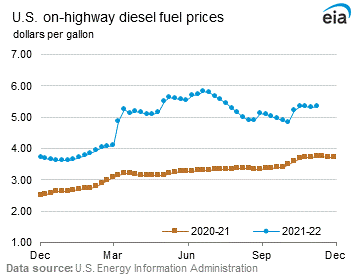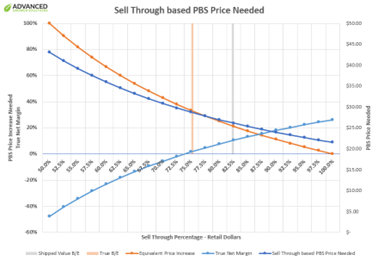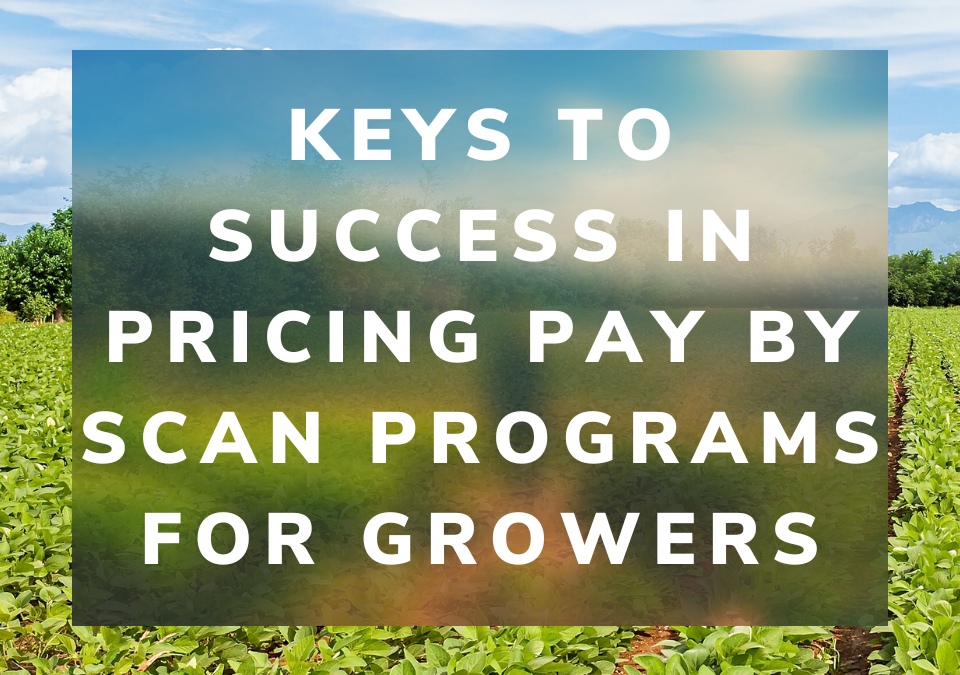
Grower Data Transfer Methods You Need to Know When Talking to Your Trading Partners
December 6, 2022
What Are The Key Grower Software System Capabilities for Pay By Scan?
January 4, 2023According to international consulting firm McKinsey and Co.,
“Pricing is by far the biggest tool for earnings improvement.”
— McKinsey & Co
For growers participating in or considering going to a pay by scan program with their retailers, pricing is absolutely crucial. But it is also difficult.
With bad initial pricing growers can literally go out of business on pay by scan since they are bearing both production and retail risk.
With correct pricing and good sell through growers can achieve above their revenue goals.
Knowing the drivers and planning correct pricing requires data and analysis in several key areas.
Know Your SKU / Item Costs
The first step in effective pay by scan pricing is knowing your item costs or COGS.
For most growers Cost of Goods Sold (COGS) is comprised of the raw materials used to manufacture sellable items, the costs of the labor to produce, maintain and ready for shipment, and the overhead costs associated with your facility operation.
Raw materials include the soil, fertilizer, chemicals, pots and containers, the seed or liner/plug inputs you use, tags or stickers, trays and any other raw materials that are required for each finished good you sell.
The labor costs for COGS typically include plant production, plant maintenance and the labor to pick and ship. Tracking your labor hours and total labor costs and knowing your unit volume will help you calculate your unit labor value which you can apply to the finished good.
Finally, there are the overhead costs that every facility must bear. Things such as water and energy costs, certain types of facility maintenance, and apportioned costs for leases, taxes and location costs should be included.
And don’t fall victim to thinking your past costs are your costs.
You must project your current actuals to create forward-looking costs.
You need to consider how much will raw materials categories go up. How much will plant inputs like seeds, cuttings or plugs increase? What will the future cost changes of containers be? What about labor? How much will your labor costs increase for next year?
Each of these questions needs to be discussed, the data analyzed, and planned with your vendors to enable an informed calculation of your forward-looking cost estimates.
Have Historical Sales Data
Having historical sales data by store/SKU can give you better insights into the seasonal patterns of stores, SKUs or item categories.
This means that the software systems you use must support the additional fields so that you can ‘slice and dice’ the historical data in meaningful ways.
Knowing store/SKU or store category patterns can then feed-forward to help more accurately weight your next year’s forecast and planning and help build statistical rules of thumb for approximations.
Building reports and analysis showing your projected costs against SKU performance/sell through and pricing will show where you need pricing changes.
Know Your Distribution And Transportation Costs
In pay by scan programs the growers bears shipping costs. Whether you use your own trucks or a third party for your transportation, know your costs.
The grower must know and build in predictive values for forward-looking transportation costs.
As we are near the end of 2022 the prices of retail diesel are up over 47% year over year based on data from the US Energy Information Administration. You can look at historical data like that available from the EIA and build estimates for your area.

US EIA diesel fuel trends – as of Nov. 9, 2022 – https://www.eia.gov/petroleum/weekly/?src=email
Courtesy U.S. Energy Information Institute
As a pay by scan vendor, you are forecasting ‘landed pricing’, usually a year in advance, on your items.
The pricing must attempt to predict things like increases in fuel costs and other transportation impacts. Sometimes you can negotiate things like fuel surcharges with your retailer to help recover rapidly changing prices but retailers agreeing to this arrangement is not guaranteed.
Your pricing analytics must account for potential increases in your transportation costs whether you run your own trucks for delivery or use third-party carriers.
Looking at your historical aggregated transportations costs, then weighting them back to a per unit pricing and applying increase assumptions is sometimes the most straightforward way to allocate these costs.
Understand Your Merchandising Costs
In pay by scan programs the grower also usually bears the cost of merchandising the in-store product. This can include setting plants off the racks for display to the plan-o-gram, watering, culling, updating signage and other inventory management tasks.
If the grower self-merchandises they must contend with personnel hiring, onboarding, payroll and time tracking, transportation and in-store data collection and reporting
Some growers use third-party merchandisers that charge a percentage of sales or inventory. It is crucial that the grower plans for these costs and then manages them closely during the year.
Additionally, coordinating deliveries with your merchandising staff, whether in house or third party, is crucial to make sure plants are available to be sold as soon as practical after delivery. Make sure your software tools support the necessary near real time notification of planned deliveries.
A grower needs to know the aggregate estimated costs of these activities and build those in to their per unit basis of their pricing program.
Understand Sell Through And Its Impact On Pricing
Sell through has a tremendous impact on grower revenue.
The historical data you have (or work with your retailer to get) can show sell-through patterns and give you insight into pricing problems.
Ultimately the grower’s gross revenue and margin under pay by scan is directly correlated with sell-through.
If the grower delivers 100 plants at a cost of $10 per and the sell through is 0% then the grower makes $0. Commensurately, if the grower achieves 100% sell through on those plants, then the grower makes their $1,000. In each case the grower bears the cost of all those shipped plants whether they sold or not, a key fact in any pay by scan profitability analysis.
Sell through varies by store, SKU, time of year. Sell through is impacted by promotions (or lack thereof), holidays, negative economic news, pandemics, and weather to name a few. Also, poor merchandising can negatively impact sell through.

Example sell through based analytical pricing curves
Copyright Advanced Grower Solutions
As you investigate your data on sell through, it’s important to understand these external contexts that will impact future sell through assumptions and your pricing analytics and how those scenarios will change your profitability.
Be Aware Of Markdown Impacts
Some retailers use markdown in their pay by scan programs to as a way to move out lower quality inventory that wouldn’t sell otherwise. Markdown programs can help your category unit sell through in some cases but impacts your revenue. Understand how your margin changes with markdown decisions and know ahead of time what SKUs will be used so your data is aligned.
Make sure you and your staff evaluate the markdown plans of your program. Examine historical data to gauge the past impact to key SKUs or stores. Once you have a picture of this impact a grower can more effectively build in cushion for the impact of markdown.
Bottom Line
Pay by scan can be economically beneficial to the grower in the right scenarios. Pricing a pay by scan program is the first and most crucial part to help a grower achieve revenue goals for their pay by scan program. Learn more about the Pay by Scan model arrangement between growers and big-box retailers as well as information on software capabilities needed for this model and key factors for success. Read the Pay by Scan Playbook here.
To learn more about how DTS/Merch can help your vendor management inventory tasks or to schedule a demo contact us.





